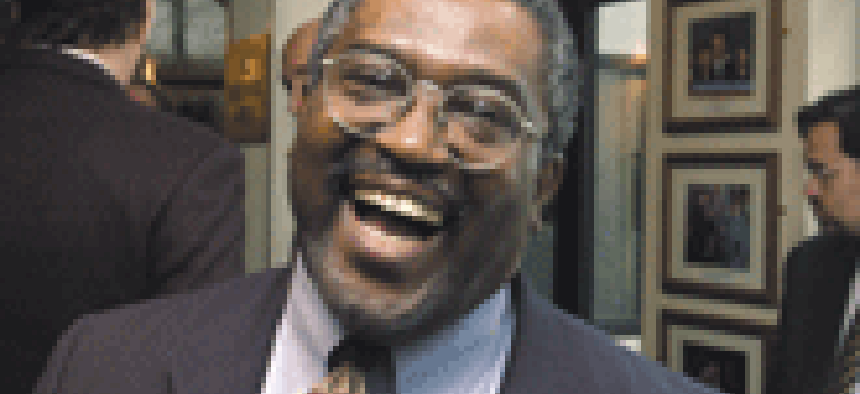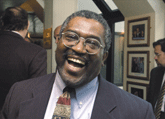Doing Business With Treasury Department

Treasury Department<br>1500 Pennsylvania Ave. NW<br>Washington, D.C., 20220 <br>202-622-2000
Treasury Department1500 Pennsylvania Ave. NWWashington, D.C., 20220 202-622-2000 1789 John Snow
www.treas.gov
Founded:
Secretary:
Employees:
What it does: The Treasury is the primary federal agency responsible for U.S. economic and financial prosperity and security. It is an adviser to the president on economic and financial issues and promotes his growth agenda.
Among the Treasury Department's basic duties are managing federal finances, collecting taxes and monies due to the United States, paying the country's bills, managing government accounts and debt, and producing postage stamps, currency and coinage.
Internationally, the Treasury Department works with other federal agencies, other nation's governments and international financial institutions on economic growth, standards of living and forecasting economic and financial crises.
Major subagencies: Alcohol and Tobacco Tax and Trade Bureau; Bureau of Engraving and Printing; Bureau of Public Debt; Financial Crimes Enforcement Network; Financial Management Service; Internal Revenue Service; Office of the Comptroller of the Currency; Office of Thrift Supervision; and U.S. Mint
Number crunching:
2005 Senate-approved budget:
$11.3 billion
2004 budget:
$11.4 billion Full title: Chief information officer
Full title: Chief information officer
Took the job: June 14
Hometown: Tallahassee, Fla.
Home now: Mitchellville, Md.
Family: Wife, Deborah; son, Ira Lynn Hobbs II
Hobbies: Golf
Last book read: "The Price of Loyalty: George W. Bush, the White House and the Education of Paul O'Neill," by Ron Suskind
Alma mater: Bachelor of arts degree in political science and economics from Florida A&M University, master's degree in public administration and information technology from Florida State University
WT: What do you look forward to as the new Treasury CIO?
Hobbs: The opportunity to build something myself. Up to now, I believe I have demonstrated a capacity to assist others in crafting the vision. Now, can I become the visionary?
WT: What is different here than at Agriculture?
Hobbs: The jobs are very consistent in terms of the types of functions and the kinds of issues you are dealing with. Both organizations have a great deal of history. They are very essential and woven into the fabric of America; the Treasury Department being one of the first original cabinet positions, the Agriculture Department being the people's department. They both have rich history and heritage.
WT: After seven years as the acting CIO at Agriculture and now this job, what have you learned about being a CIO?
Hobbs: It's changing and evolving. It was originally about technology for technology's sake. For so long, we were just the people beneath the stairs, in the back room. Now, because of the infusion and pervasiveness of information technology, it's driving the direction of change and transformation in terms of how business is delivered. We now exist as a very formidable weapon of choice in the arsenal of management.
WT: What is your biggest challenge in this new job? What are your biggest technology concerns?
Hobbs: My biggest challenges don't necessarily deal with technology. It's hard to buy a bad computer. Ten years ago, anyone going to buy a computer took a friend along, because the technology itself was so scary and risky, you wanted to be sure you didn't make a mistake. Today you can send your children to the store to buy a computer, because the technology is so consistent, so repeatable, so accurate in its delivery. The technology isn't the challenge.
What I find is the challenge is the age-old thing we deal with across management: How do you get a group of people aligned in such a way that they can buy into a direction, a vision of where you're trying to go, and then you move that group. That is the business we're in today. Technology is becoming a smaller and smaller piece of that, simply because the technology is so good.
As far as technological directions, it really is about how do we make sure information gets to where it needs to be, when it needs to be there. That involves our telecommunications infrastructure, its protection and security to make sure that whoever gets the information is the person that it was intended for [and] that we reduce the things that lead to nefarious activities across our network.
Those are the technological things at the top of my list. So what I've given you are cybersecurity, telecommunications and enterprise management.
www.treas.gov
Founded:
Secretary:
Employees:
What it does: The Treasury is the primary federal agency responsible for U.S. economic and financial prosperity and security. It is an adviser to the president on economic and financial issues and promotes his growth agenda.
Among the Treasury Department's basic duties are managing federal finances, collecting taxes and monies due to the United States, paying the country's bills, managing government accounts and debt, and producing postage stamps, currency and coinage.
Internationally, the Treasury Department works with other federal agencies, other nation's governments and international financial institutions on economic growth, standards of living and forecasting economic and financial crises.
Major subagencies: Alcohol and Tobacco Tax and Trade Bureau; Bureau of Engraving and Printing; Bureau of Public Debt; Financial Crimes Enforcement Network; Financial Management Service; Internal Revenue Service; Office of the Comptroller of the Currency; Office of Thrift Supervision; and U.S. Mint
Number crunching:
2005 Senate-approved budget:
$11.3 billion
2004 budget:
$11.4 billion

Ira Hobbs
Henrik G. de Gyor
Took the job: June 14
Hometown: Tallahassee, Fla.
Home now: Mitchellville, Md.
Family: Wife, Deborah; son, Ira Lynn Hobbs II
Hobbies: Golf
Last book read: "The Price of Loyalty: George W. Bush, the White House and the Education of Paul O'Neill," by Ron Suskind
Alma mater: Bachelor of arts degree in political science and economics from Florida A&M University, master's degree in public administration and information technology from Florida State University
WT: What do you look forward to as the new Treasury CIO?
Hobbs: The opportunity to build something myself. Up to now, I believe I have demonstrated a capacity to assist others in crafting the vision. Now, can I become the visionary?
WT: What is different here than at Agriculture?
Hobbs: The jobs are very consistent in terms of the types of functions and the kinds of issues you are dealing with. Both organizations have a great deal of history. They are very essential and woven into the fabric of America; the Treasury Department being one of the first original cabinet positions, the Agriculture Department being the people's department. They both have rich history and heritage.
WT: After seven years as the acting CIO at Agriculture and now this job, what have you learned about being a CIO?
Hobbs: It's changing and evolving. It was originally about technology for technology's sake. For so long, we were just the people beneath the stairs, in the back room. Now, because of the infusion and pervasiveness of information technology, it's driving the direction of change and transformation in terms of how business is delivered. We now exist as a very formidable weapon of choice in the arsenal of management.
WT: What is your biggest challenge in this new job? What are your biggest technology concerns?
Hobbs: My biggest challenges don't necessarily deal with technology. It's hard to buy a bad computer. Ten years ago, anyone going to buy a computer took a friend along, because the technology itself was so scary and risky, you wanted to be sure you didn't make a mistake. Today you can send your children to the store to buy a computer, because the technology is so consistent, so repeatable, so accurate in its delivery. The technology isn't the challenge.
What I find is the challenge is the age-old thing we deal with across management: How do you get a group of people aligned in such a way that they can buy into a direction, a vision of where you're trying to go, and then you move that group. That is the business we're in today. Technology is becoming a smaller and smaller piece of that, simply because the technology is so good.
As far as technological directions, it really is about how do we make sure information gets to where it needs to be, when it needs to be there. That involves our telecommunications infrastructure, its protection and security to make sure that whoever gets the information is the person that it was intended for [and] that we reduce the things that lead to nefarious activities across our network.
Those are the technological things at the top of my list. So what I've given you are cybersecurity, telecommunications and enterprise management.